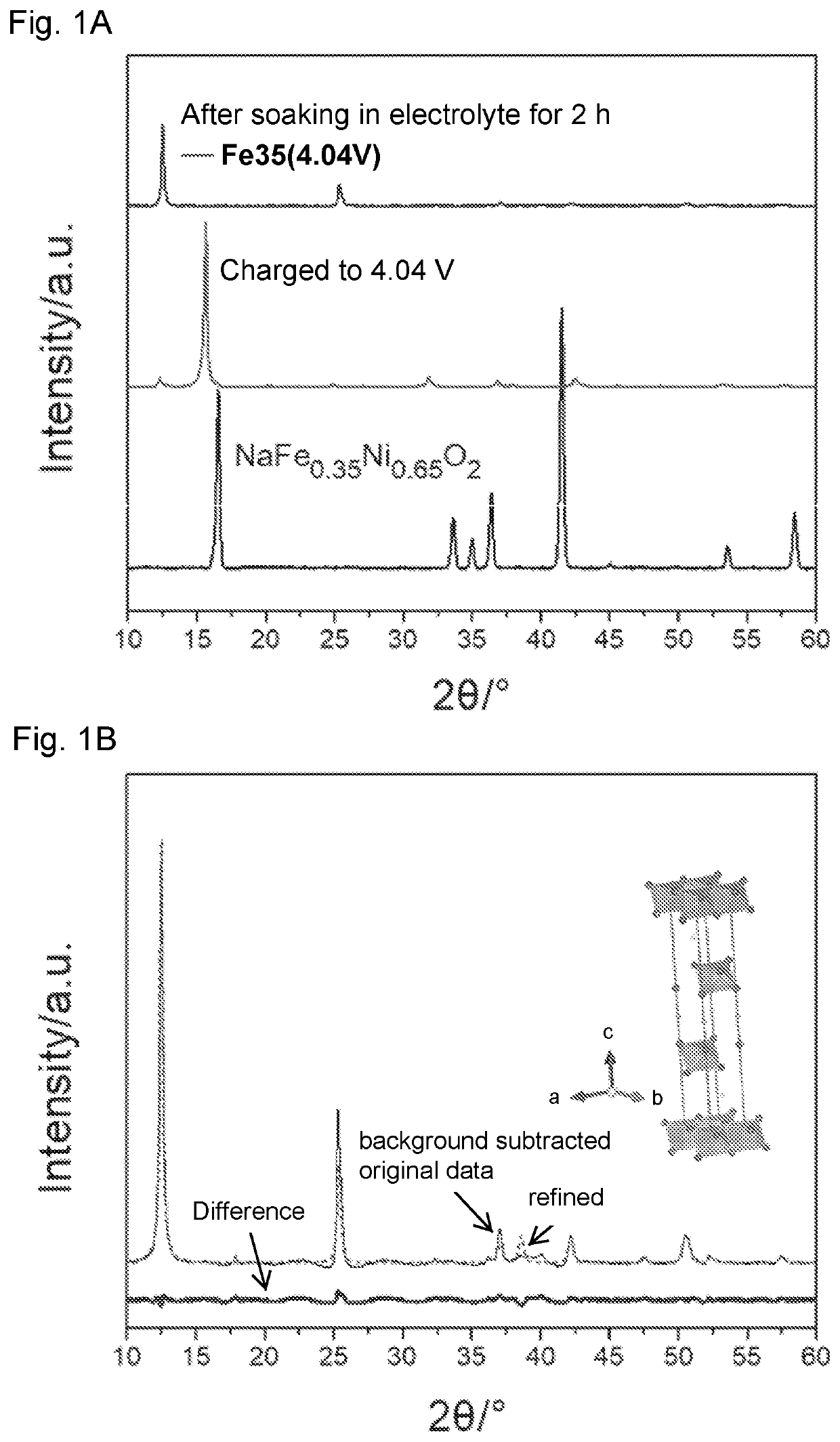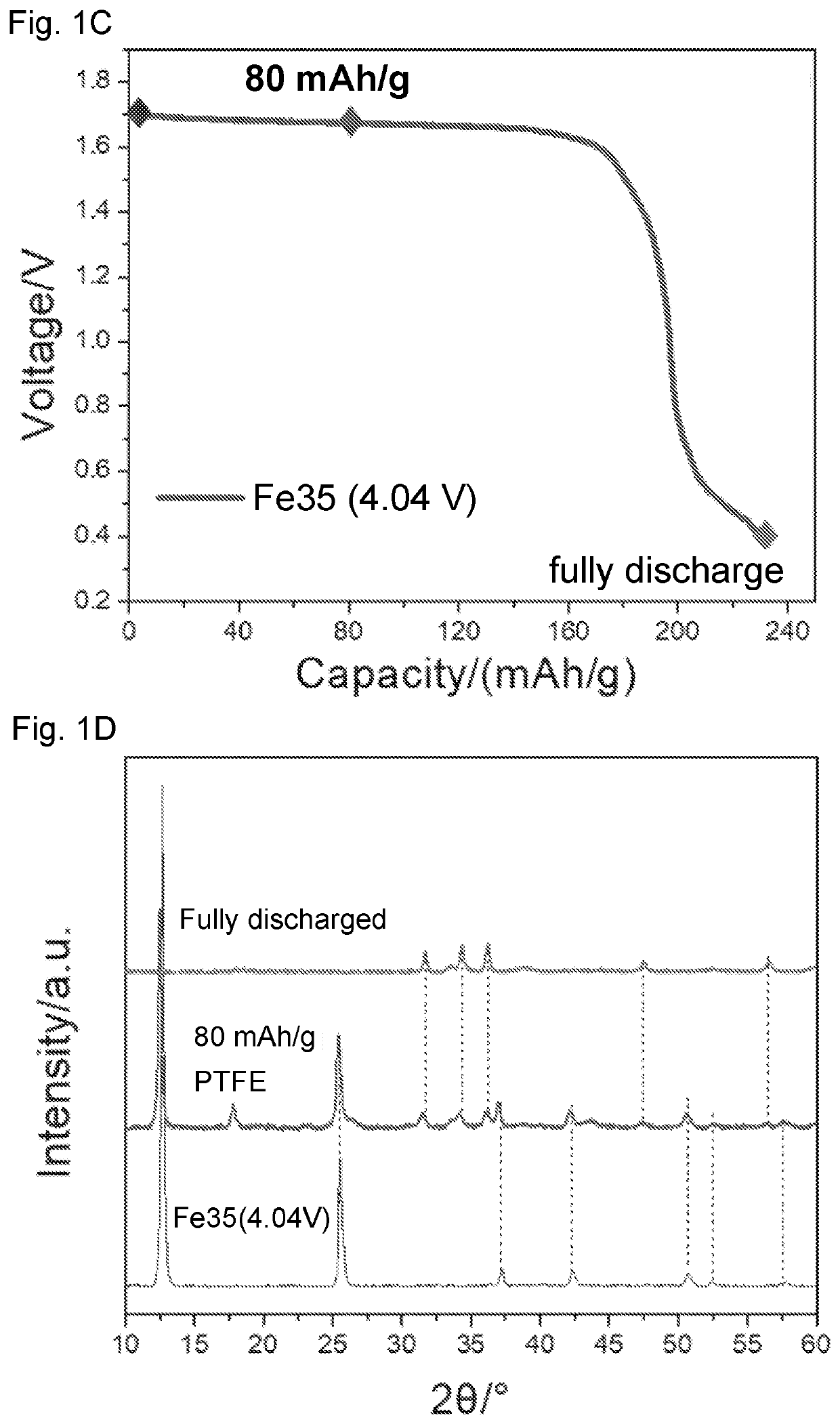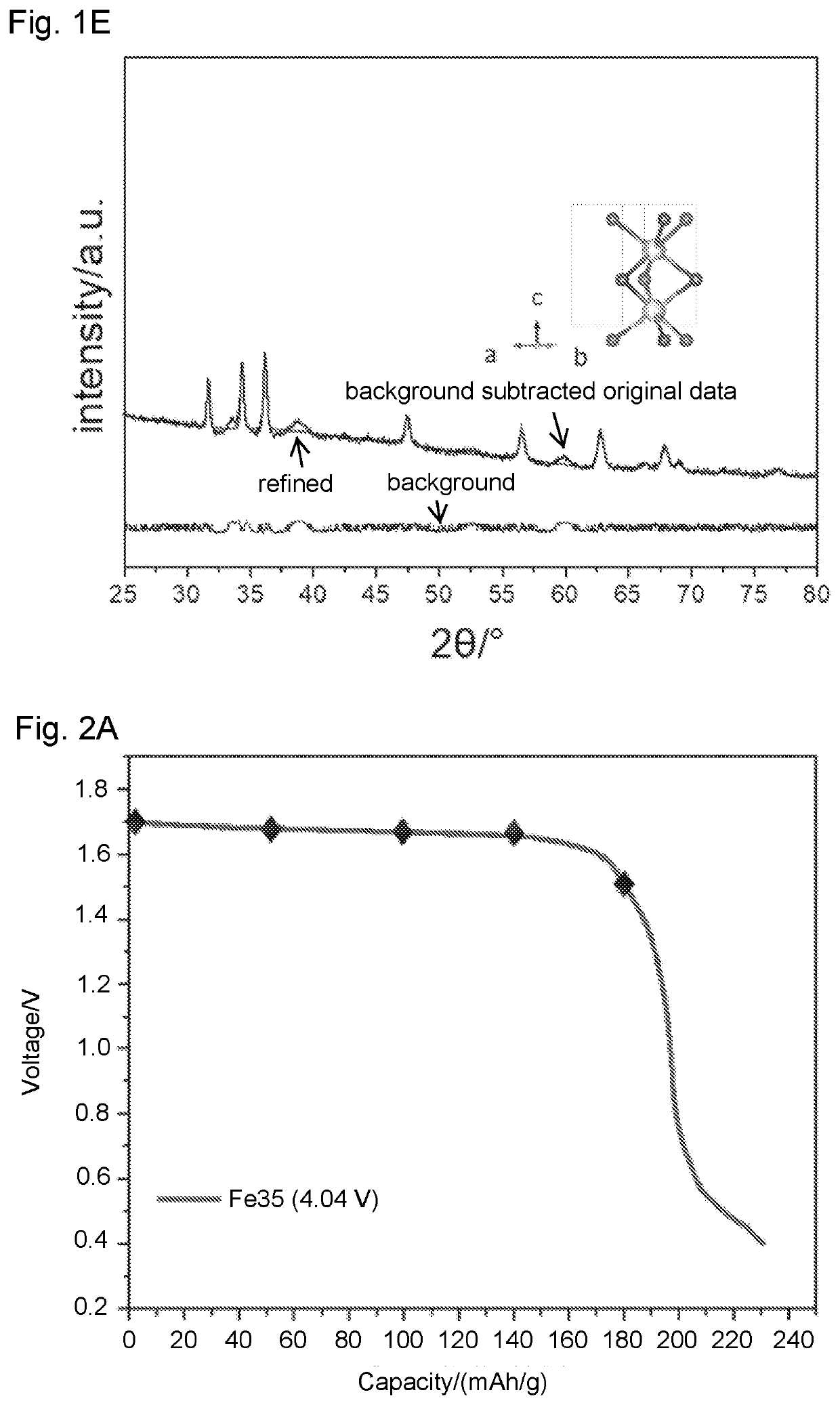Desodiated sodium transition metal oxides for primary batteries
a technology of transition metal oxides and sodium transition metal oxides, which is applied in the direction of cell components, electrochemical generators, nickel compounds, etc., can solve the problems of limited application of sodium in primary batteries, and achieve the effect of low cost and high abundan
- Summary
- Abstract
- Description
- Claims
- Application Information
AI Technical Summary
Benefits of technology
Problems solved by technology
Method used
Image
Examples
example 1
of Sodium Transition Metal Oxides
[0055]Sodium transition metal oxides of the present invention were synthesized using solid state reaction methods by mixing either Na2O2 or Na2CO3 with the transition metal oxides. The mixed precursor materials were pressed into a pellet. The pellet was then heated in a tube furnace between 650-950° C. for approximately 10-12 hours in an air or oxygen atmosphere. The choice to use air or oxygen for the heating process was based on the specific compound desired. The heated pellets were quenched or slowly cooled down after the heating process.
example 2
alation of Sodium in Synthesized Sodium Transition Metal Oxides
[0056]For the electrochemical de-intercalation method, the cathode film of the electrochemical cell was made by mixing powdered as-synthesized sodium transition metal oxides, Super P carbon black, and dry PTFE. A Swagelok battery was assembled using glass fiber as a separator, sodium metal as the anode, and 1 M NaPF6 or NaClO4 in EC / DEC / FEC as the electrolyte. The charging process was applied with the high cutoff voltage ranging from 3.9 V to 4.5 V according to the specific sodium composition (x) needed to be left in NaxMO2.
[0057]For the chemical de-intercalation method, an iodine (I2)-acetonitrile solution was used to oxidize a pristine powder of the as-synthesized sodium transition metal oxides and extract sodium simultaneously. For sodium transition metal oxides that have higher sodium atomic content, and thus correspond to a low voltage during electrochemical charging, one sodium ion can be extracted by ½ I2. For sod...
example 3
d Sodium Transition Metal Oxides in Primary Batteries
[0058]Proton intercalation was performed in a Swagelok battery connected to a Landt battery test station. For electrical testing, the discharge performance of all synthesized materials was measured at a rate of 1 / 30 C with a cut-off voltage of 0.2 V.
[0059]The cathode active material was the NaxMO2 material after de-intercalation of Na as described in Example 2. The cathode film had a mass ratio of 80:15:5 for active cathode material, carbon black and PTFE. The anode was a strip of Zn foil 0.25 mm thick. For most of the synthesized compounds studied, the electrolyte was an aqueous solution of 9 M KOH with 0.6 M ZnO. For the particular compound Na0.24Fe0.3Ni0.65O2, the electrolyte was an aqueous solution of 3.2 M LiOH with 0.8 M KOH. Glass fiber was used as separator.
[0060]Table 1 provides a list of exemplary desodiated sodium transition metal oxides of the present invention and their electrochemical characterization with comparison...
PUM
| Property | Measurement | Unit |
|---|---|---|
| electrochemical discharge voltage | aaaaa | aaaaa |
| voltage | aaaaa | aaaaa |
| voltage | aaaaa | aaaaa |
Abstract
Description
Claims
Application Information
 Login to View More
Login to View More - R&D
- Intellectual Property
- Life Sciences
- Materials
- Tech Scout
- Unparalleled Data Quality
- Higher Quality Content
- 60% Fewer Hallucinations
Browse by: Latest US Patents, China's latest patents, Technical Efficacy Thesaurus, Application Domain, Technology Topic, Popular Technical Reports.
© 2025 PatSnap. All rights reserved.Legal|Privacy policy|Modern Slavery Act Transparency Statement|Sitemap|About US| Contact US: help@patsnap.com



